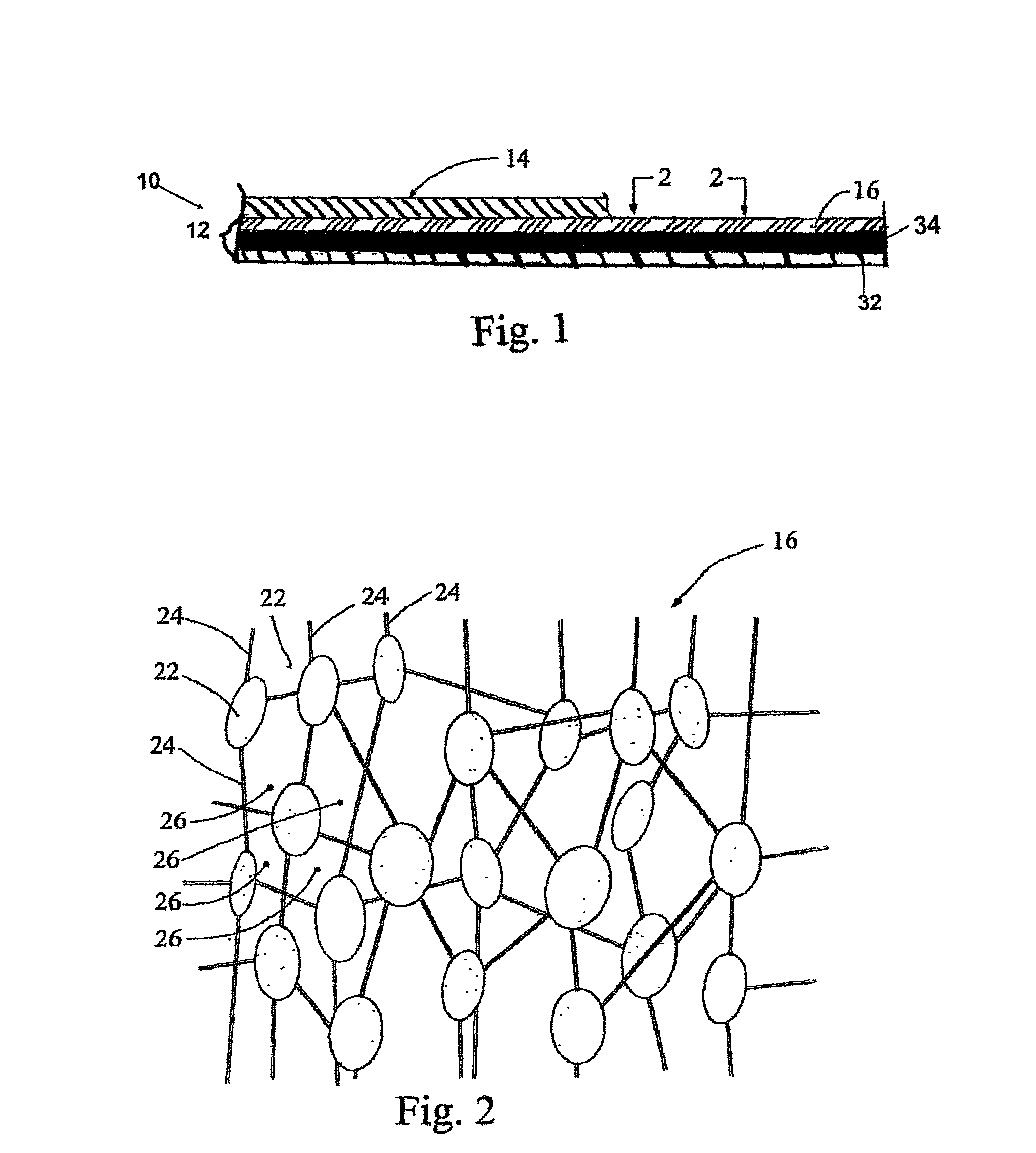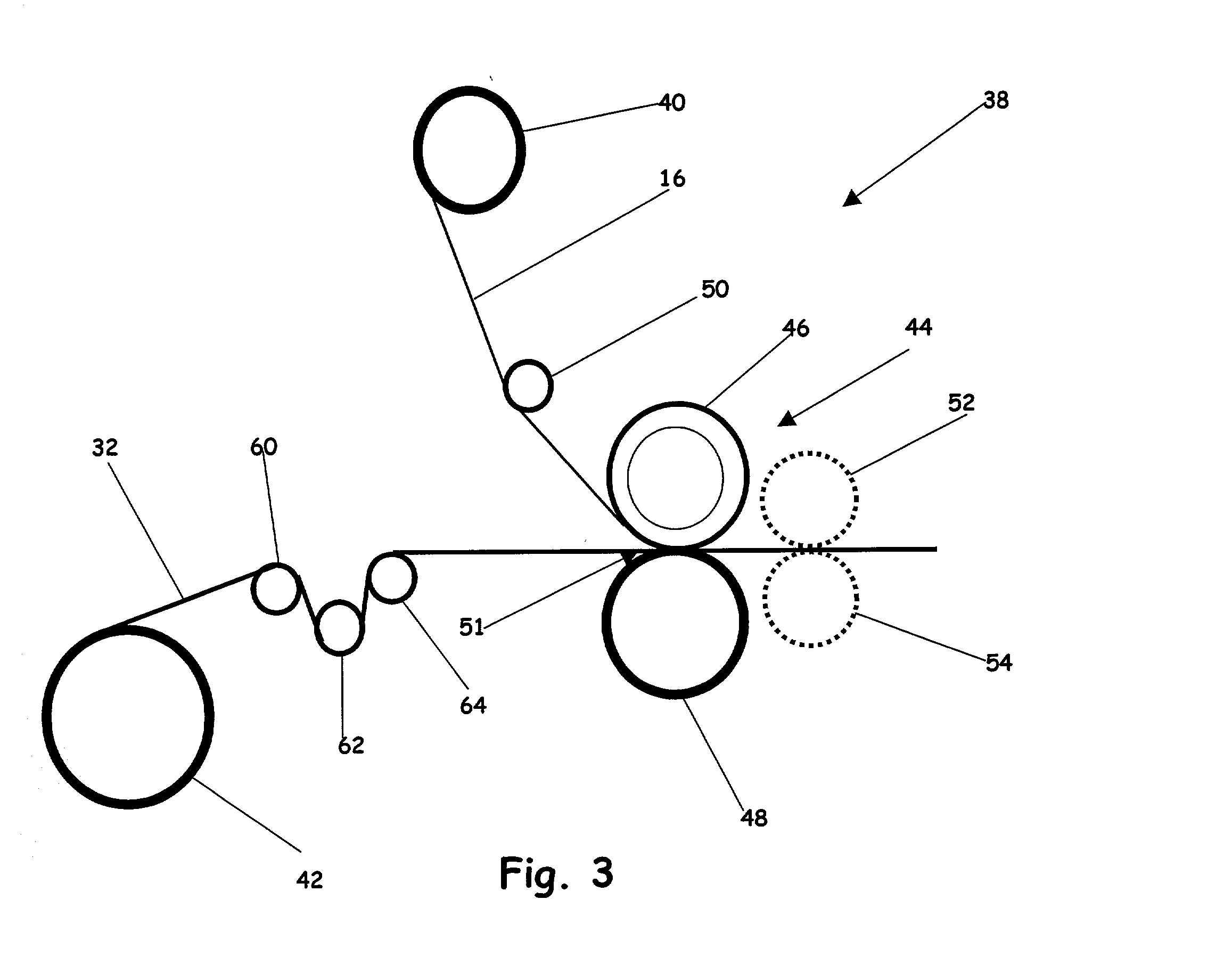Membrane composite structure and method of production
a composite structure and membrane technology, applied in the field of membrane structure and method of production, can solve the problems of negating the waterproof nature of such a membrane and no longer preventing water passage through the membrane, and achieve the effect of broadening the temperature range of performance and cost-effectiveness
- Summary
- Abstract
- Description
- Claims
- Application Information
AI Technical Summary
Benefits of technology
Problems solved by technology
Method used
Image
Examples
Embodiment Construction
[0037] Utilizing the previously described melting system 38 that utilizes a hot roll calendering mechanism 44 that includes a heated roll 46 and a water-cooled, compression roll 48, which are separated by the gap 51, for applying heat to the membrane 16 and pressure to the membrane 16 and the thermoplastic material 32 in order to create melted thermoplastic material 34 that flows around at least one structural element, e.g., node or fibril, of the plurality of structural elements, e.g., nodes and fibrils, of the membrane 16 to provide attachment when the thermoplastic material 34 again solidifies by capturing the at least one structural element, e.g., node or fibril, of the plurality of structural elements, e.g., nodes and fibrils, of the membrane to attach the first layer 16 and the second layer 32 together to form the resulting composite structure 12. In this example, the membrane 16 is ePTFE and the thermoplastic material 32 is polyurethane. The illustrative, but nonlimiting, par...
PUM
| Property | Measurement | Unit |
|---|---|---|
| size | aaaaa | aaaaa |
| size | aaaaa | aaaaa |
| melting temperature | aaaaa | aaaaa |
Abstract
Description
Claims
Application Information
 Login to View More
Login to View More - R&D
- Intellectual Property
- Life Sciences
- Materials
- Tech Scout
- Unparalleled Data Quality
- Higher Quality Content
- 60% Fewer Hallucinations
Browse by: Latest US Patents, China's latest patents, Technical Efficacy Thesaurus, Application Domain, Technology Topic, Popular Technical Reports.
© 2025 PatSnap. All rights reserved.Legal|Privacy policy|Modern Slavery Act Transparency Statement|Sitemap|About US| Contact US: help@patsnap.com



